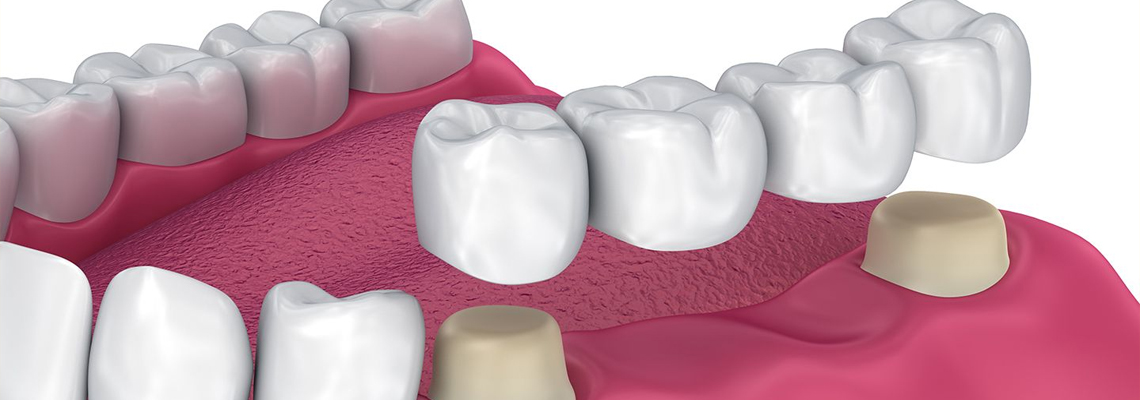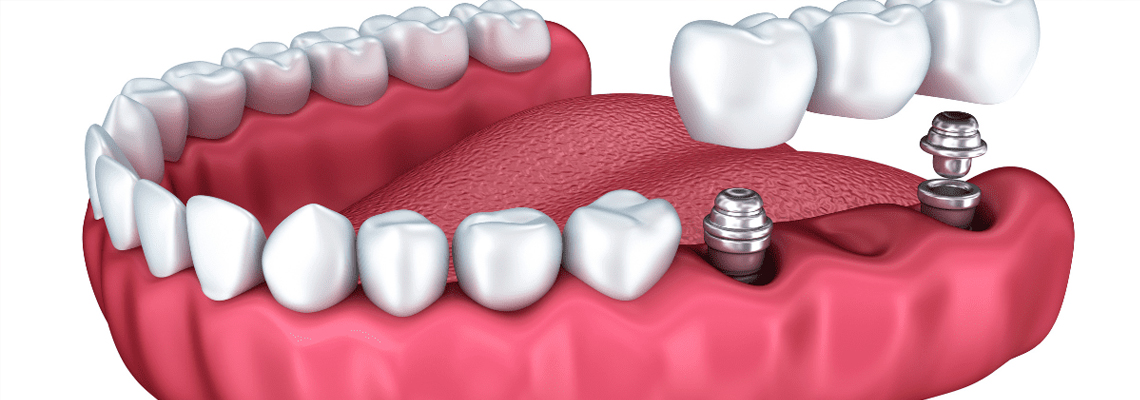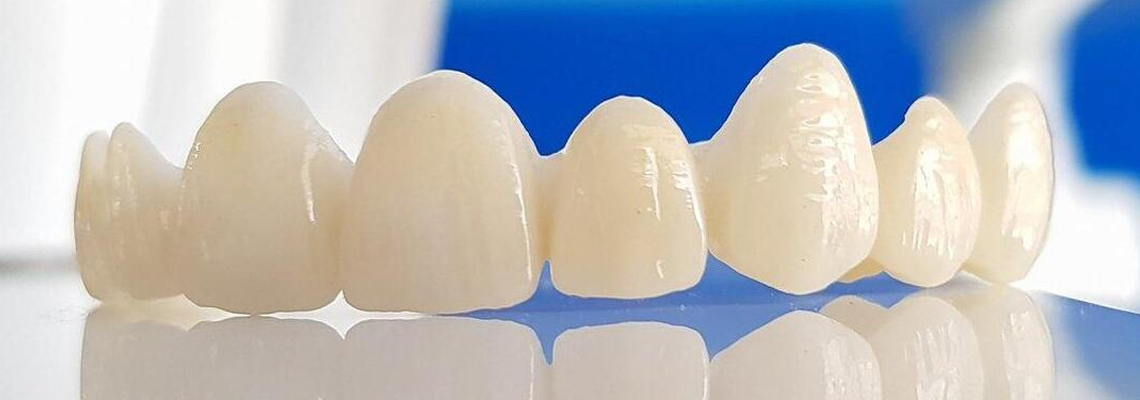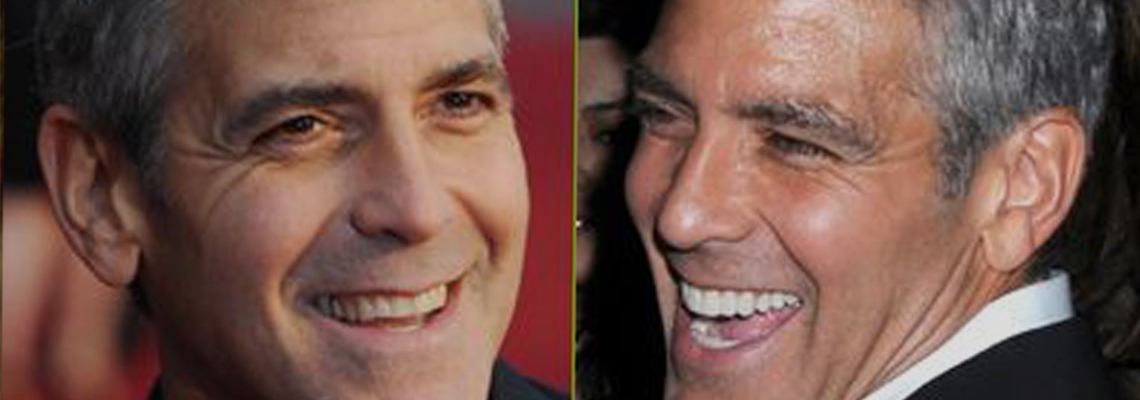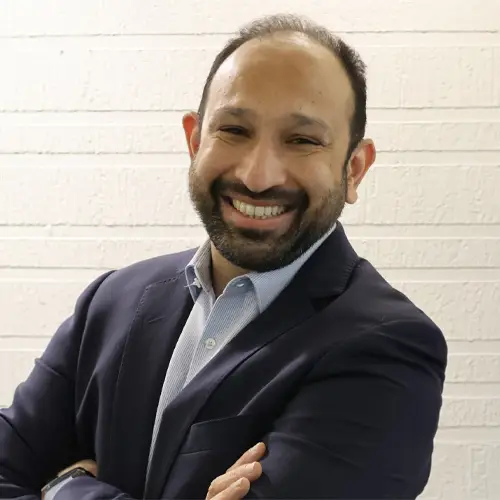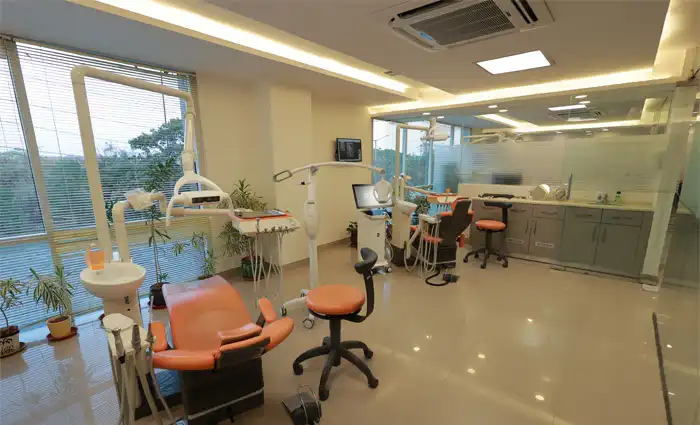Before dental implants became a popular and stable way to replace missing teeth, dental bridges were the big thing. Even though we love dental implants and use them to help many of our patients regain good chewing function, a dental bridge may be a better way to replace a tooth in many situations. In this week’s blog, we’ll talk about bridges. What you need to realize is that there is no one-size-fits-all solution for replacing teeth. To get the best long-term fix for your missing tooth, you must work with your dentist to figure out which option is best for you and your situation.
What is a Dental Bridge?
The correct name for a dental bridge is a Fixed Partial Denture or FPD. “Fixed” means that it is attached to your mouth and can’t be taken out. “Partial” means it replaces some of your teeth, but not all of them. “Denture” is a dental term for fake or replacement teeth.
A traditional dental bridge is made up of two crowns that go over the teeth on either side of the missing tooth or teeth and pontics, which are fake teeth that replace the missing one or teeth. For a bridge to work, the two healthy teeth next to the space where a tooth is missing must be strong enough to support the extra force or weight of the pontic. We call bridges by how many units they have, which is always the number of points plus the number of retainer crowns. So, a bridge that replaces one missing tooth would be made up of three units.
How does it work?
A bridge connects the teeth on either side of a space where a tooth is missing. It does this by using crowns, which are traditional dental caps that cover the whole visible part of a tooth. No matter how many units it has, the bridge itself is made of a single piece of metal, porcelain, or a mix of the two. The three “teeth” of a three-unit bridge are linked together. The crowns go over and rest on top of the retainer teeth, and the pontic, which is attached to them, floats above the gums where the missing tooth is.
A bridge only “works” when the two teeth next to it are strong enough to support the extra force of chewing that the pontic will add. It takes the place of the tooth that was lost and its chewing surface. But it doesn’t make up for the missing tooth’s root. Since a dental bridge doesn’t have a root to hold it up, it is held in place by the teeth next to it.
How many teeth can be replaced by a bridge?
Good question! Different dentists may also tell you different things. Long-term studies have slowly changed people’s minds by showing that the longer a bridge span is, the shorter its lifespan is. The longer-term outlook gets worse the more teeth you try to fix. Bridges are usually a good way to replace one or two missing teeth.
A longer row of teeth will only work if the teeth underneath them are healthy and strong. For example, a bridge that rests on a big, strong first molar and a long-rooted canine to replace two missing premolars would probably work well in the long run. The supporting teeth should be much bigger and stronger than the teeth being used to replace the ones that are missing.
When are dental bridges a good treatment option?
There are many ways that a dental bridge could be the best way to replace a missing tooth. Here are some situations that might point in that direction.
Esthetic Concerns
Most of the time, we can use dental implants to make beautiful cosmetic results. But in some cases, a dental bridge is the best and most aesthetically pleasing way for Dr. Motiwala to replace a missing front tooth. At the Dr. Motiwala Dental Clinic & Implant Centre, our main goal for each patient is to give them a beautiful, natural smile. We’ll talk about each type of treatment and explain why one might be better for your looks than another.
Lack of Healthy Bone
In some parts of the mouth, there may not be enough healthy bone for a dental implant to work. In terms of height and width, dental implants need a certain amount of bone to surround and support them. If the area where the tooth was lost has a lot of bone, the implant is not an option.
A dental bridge is a good choice when there isn’t enough healthy bone because it doesn’t anchor into the bone. Instead, it rests on top of the teeth and gums.
Adjacent Teeth Require Dental Restoration
For a bridge to work, the teeth on either side must have crowns. When these teeth already have crowns or have dental problems that require crowns, a bridge is a great option that lets you kill two birds with one stone.
If you have to put crowns on the two teeth next to each other, you might as well connect them and fill the space where the tooth used to be.
Other Health Concerns
Some people can’t get dental implants because they are worried about their health or have medical conditions that make it dangerous to do so. Implants have to be put into the jawbone through surgery. Many people can’t handle the surgery and would be better off with a dental procedure that doesn’t affect the gums and bone underneath.
Which Tooth Replacement Option is Best for My Missing Tooth?
Dr. Motiwala would rather help you make decisions about your teeth as a consultant. We think it’s our job to tell you about the different treatment options and the things about you that will affect the success of each one. Then we do the treatment that you decide meets your needs and wants the best.
We’ll do a thorough evaluation of the spot where your missing tooth used to be, gathering all the information we need to figure out if there are any risks or problems. In some situations, it may be clear that one treatment is much better than the other, while in others, both dental implants and bridges could be good choices. When it’s clear, she’ll tell you the truth about which choice is far better. When there are different ways to be successful, she’ll help you figure out which is best for you.
Got More Questions About Bridges?
Call At Dr. Motiwala Dental Clinic & Implant Centre today to set up an appointment with Dr. Motiwala. He knows how to replace missing teeth with a variety of treatments.
Are You Looking For Dental Implants
Click on the links below to learn more about the approximately $50,000 savings option for Dr. Motiwala’s packages.
- Full mouth dental implants & Cost of Treatment
- Smile Makeover & Cost of Treatment
- Watch 100’s of Testimonials from our International Patients
Make An Appointment!
Please contact us if you have dental difficulties or are interested to know about dental implants and how they might improve your smile. Dr. Motiwala Dental Clinic & Implant Center may be reached at +91 99596 14584. You can also Contact Us by clicking the banner below.



